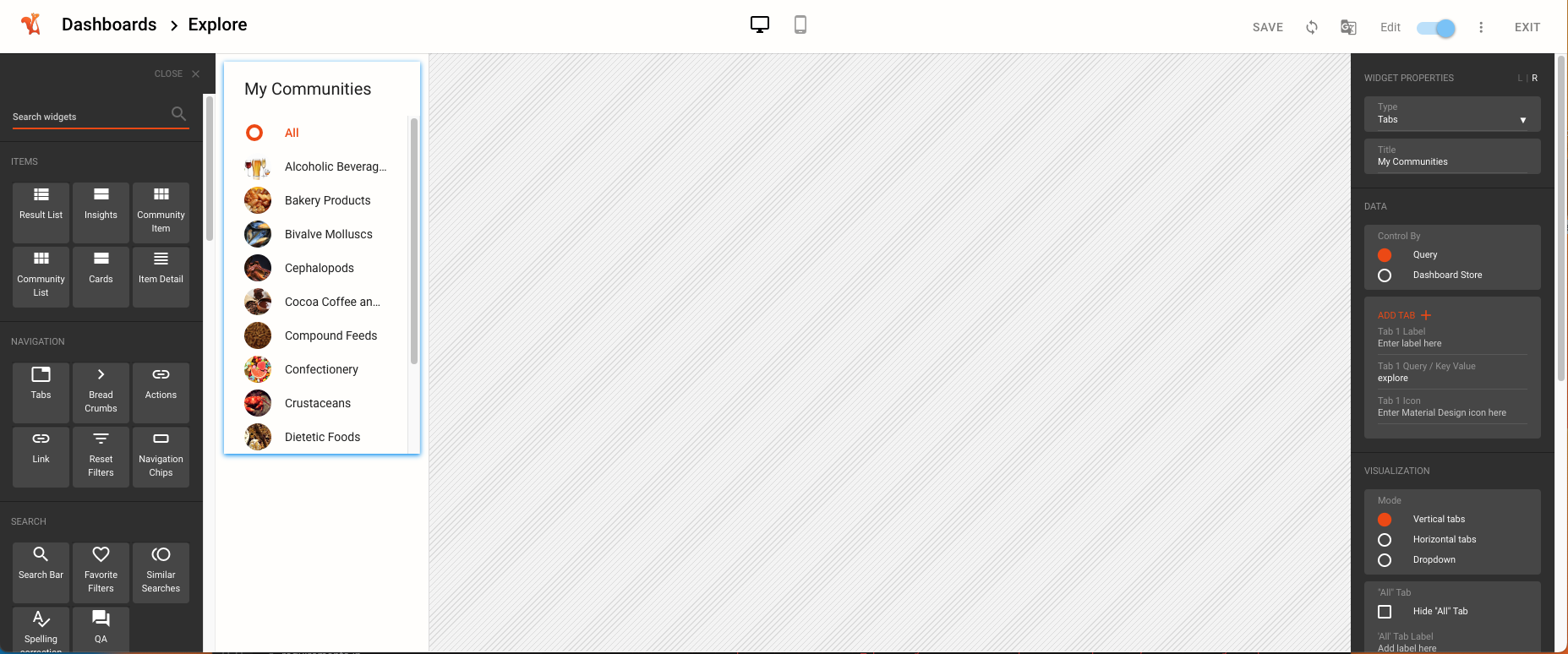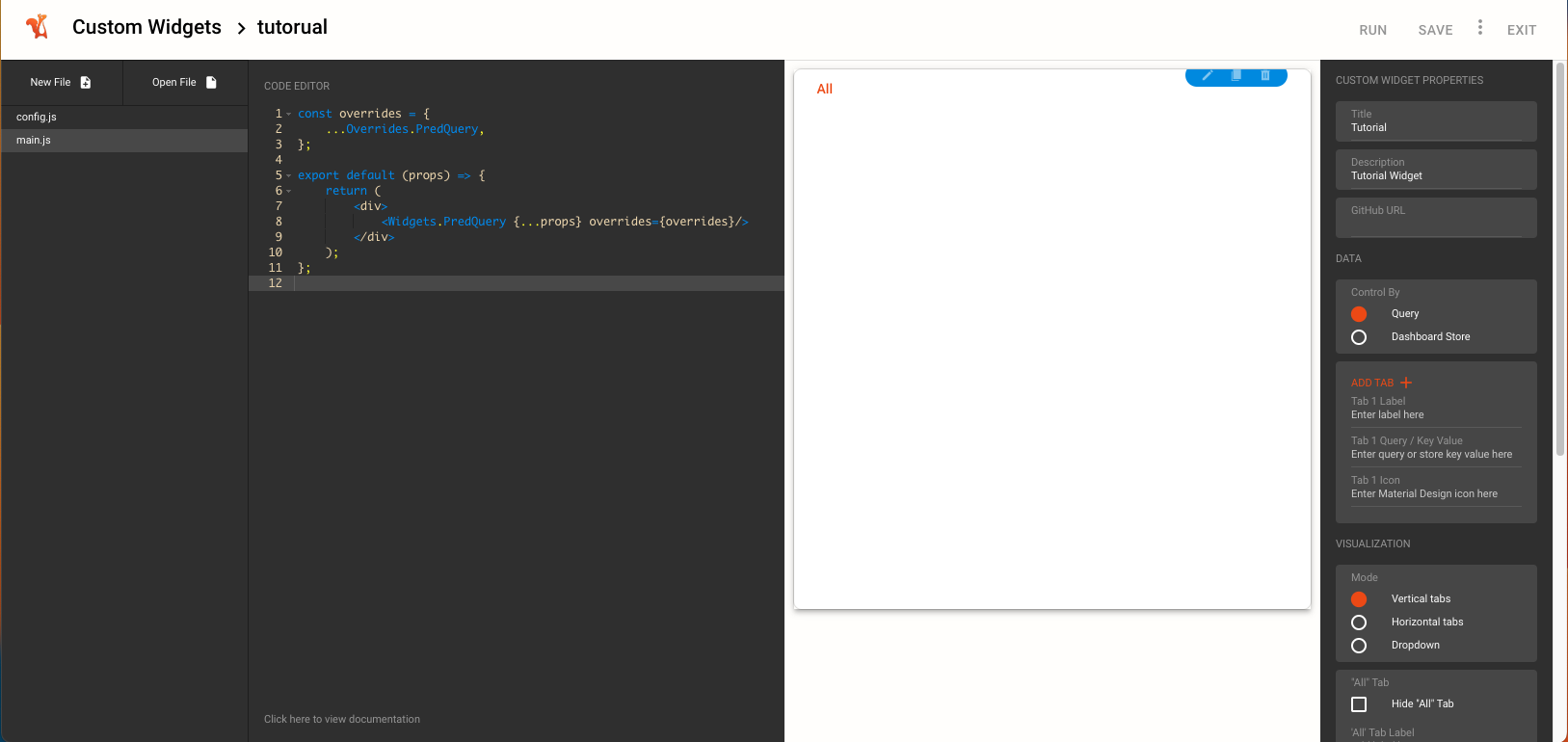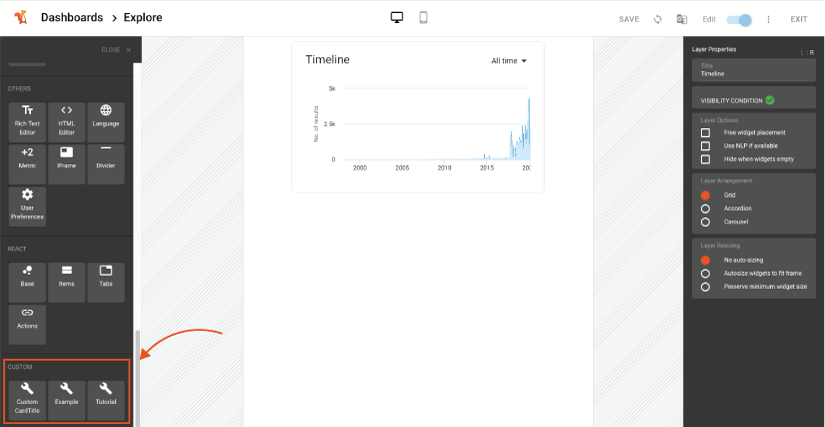How to Create a Squirro Custom Widget#
This guide will walk you through creating and deploying a Squirro custom widget.
Overview#
The primary audience for this content is frontend developers already familiar with JavaScript and React.
Reference: If you are comfortable with JavaScript but are not familiar with React, see Getting Started with React.
This guide is broken down into the following steps:
Establish the need and use case for a custom widget.
Determine if you’ll use an existing widget as a template, or create a new widget from scratch.
Create your custom widget.
Insert the custom widget into a dashboard within the Squirro UI using the Dashboard Editor.
1. Establish the Need for a Custom Widget#
Before building a custom widget, ensure that there isn’t an out-of-the-box widget that meets your use case needs.
You can browse available widgets in two ways:
By viewing a list of all out-of-the-box widgets on the Built-In Widgets docs page.
By opening the Dashboard Editor within a project, clicking the Add Widget button, and browsing the list of available widgets, as shown in the example image below:

Popular widgets for customization include the following:
2. Determine If You’ll Use a Template or Create from Scratch#
There are two ways to create custom widgets:
Start with an existing widget and modify it to meet your needs.
Create a new widget from scratch.
Existing Widget as Template
If you’re starting with an existing widget, you can use the existing widget as a template.
Reference: To browse a list of existing widgets, see Built-In Widgets.
Create a Widget From Scratch
If no existing widget meets your needs, you can create a new widget from scratch.
3. Determine Which Framework to Use#
Generally speaking, you should use React to create custom widgets wherever possible.
The only exception is if an existing widget is not yet available in React, which would take significant effort to recreate in React. If you encounter this situation, contact Squirro Support to discuss before creating.
4. Create Your Custom Widget#
This section walks you through creating a custom widget using React.
To create a custom widget, follow the steps below:
Open your Squirro project.
Navigate to the Setup space.
Click the Visualization tab.
Click Custom Widgets in the left menu.
Click the orange plus icon to create a new custom widget.
If you are creating a React widget (recommended), select the React tab as shown in the example image below:

Note
If you are using a template, select the appropriate widget. If you are creating a new widget from scratch, select Base.
Select your widget type, enter a name, title, and description, and click Next.
Create your widget using the React framework. See Creating React Custom Widgets for an understanding of the
main.jsandconfig.jsfiles and Styling React Components for guidance on styling your widget.

Additional Resources#
When creating a custom React widget within Squirro, it’s also helpful to be familiar with the following resources:
You may also find the following how-to guides and walkthroughs useful:
5. Insert Your Custom Widget into a Dashboard#
Once you’ve created your custom widget, you can insert it into a dashboard within the Squirro UI using the Dashboard Editor.
To do so, follow the steps below:
Open your Squirro project.
Navigate to the Setup space.
Click the Visualization tab.
Hover over the dashboard you want to edit and click the Edit button.
Open a section and click the Add Widget button.
Your custom widget will appear in the list of available widgets at the bottom in the Custom section. Drag and drop the widget to add it to the dashboard.

Click Save to save your changes.
Open the dashboard in the Dashboards space to view your custom widget in action and verify everything is working correctly.
Reference: See Dashboards for more information about Squirro dashboards.
